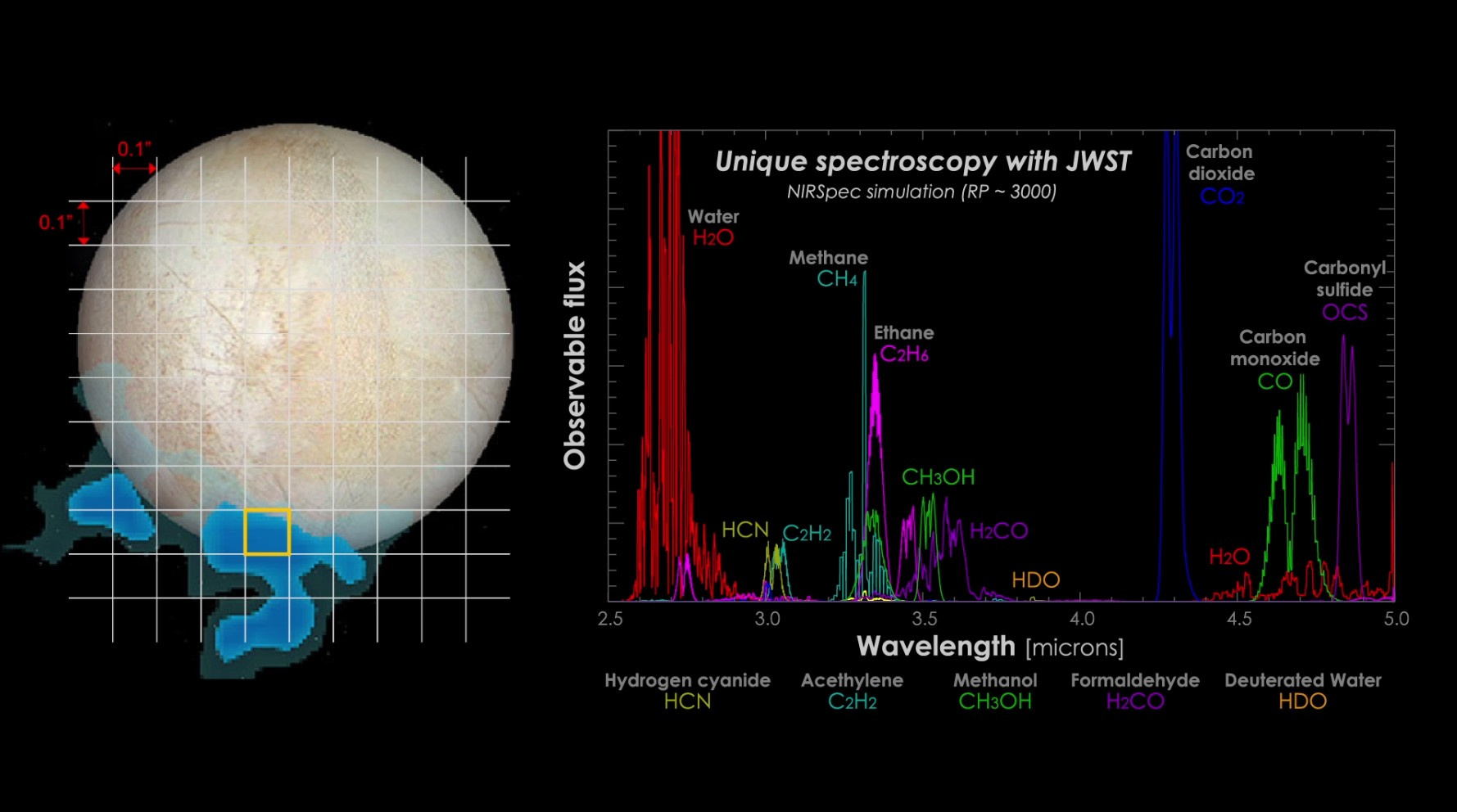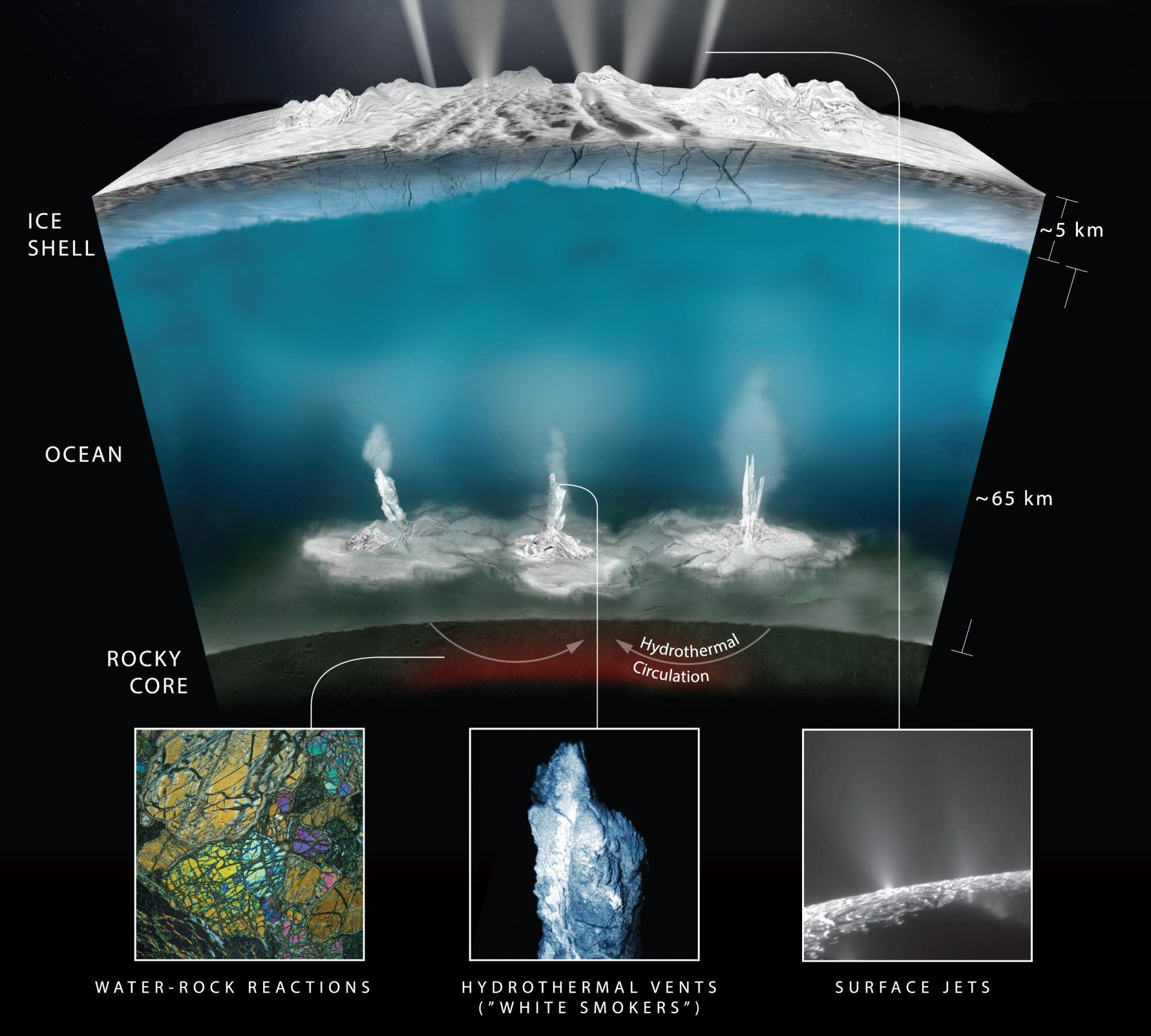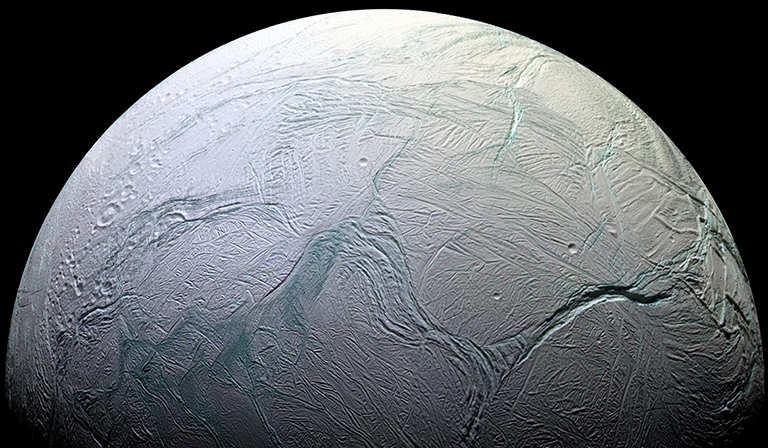"James Webb" will study the organic matter in emissions of water vapor in Europe and Enceladus

The possible results are the spectroscopy of one of the water "plumes" on Europe, which presumably consists of a mixture of hot water vapor and organic matter. This is an example of the data that a telescope can return to them. James webb
In October 2018, an infrared observatory of a new generation, the James Webb Space Telescope, is planned to be put into orbit. This station with a mirror diameter of 6.5 meters and a heat shield the size of a tennis court should be the successor to the current most powerful telescope Hubble (mirror diameter 2.4 m). No terrestrial telescope can match in its capabilities with "James Webb."
The objectives of the international project will be the search for exoplanets (with spectral lines of exoplanets and their satellites), the detection of the first stars and galaxies formed after the Big Bang in the era of Reionization , and other targets. In June 2017, NASA published a list of 2,100 first observation targets .
The list includes:
')
- Large asteroids
- Trojan asteroids
- Near-earth objects
- Jupiter
- Saturn
- Uranus
- Neptune
- Europe and Enceladus
- Titanium
- Comet 260P and not yet open comet
- Kuiper belt objects and trans-Neptunian objects
- Exoplanets
- Brown dwarfs
- Protostars, protostar disks and young star objects
- Residual disks and photodissociation areas
- Star clusters, star formation zones, planetary nebulae and galactic transients
- Selected Galaxies
- Galaxy clusters
- High redshift quasars and the internal structure of galaxies
- Specific sections of galaxies (deep fields)
As you can see, the satellite of Jupiter Europe and the satellite of Saturn Enceladus are included in the list of priority objectives for the study of the telescope. James Webb. Now NASA has revealed in detail how the infrared station will perform the spectroscopy of these two unique water worlds in our solar system.
The art renderer below shows what Enceladus can look like in a section — and where do those vapor emissions from under the ice (plumes) that we observe in telescopes come from. Under the outer ice crust, 5 km thick, there is a massive 65 km deep ocean of water, and hydrothermal processes at the bottom of this ocean generate emissions from the surface that penetrate the ice crust. The James Webb Infrared Spectrometer will examine in detail the chemical composition of these emissions at Enceladus and Europe.

Previous scientific missions to study Enceladus by the Cassini-Gügens automatic interplanetary station and the Galileo apparatus, as well as the Hubble telescope, collected evidence that these emissions on Enceladus and Europe can consist of water vapor and simple organic molecules, and are caused by geological processes that warm the vast oceans of water beneath the icy surface. NASA scientists believe that the detected chemical signatures may be of interest from the point of view of astrobiology, that is, from the point of view of the study of cosmic life.
The experiment is led by Geronimo Villanueva from the Goddard Space Flight Center. His group intends to send a NIRCam near-infrared camera to capture high-resolution Europe. The NIRSpec near-infrared spectrograph and the MIRI mid-infrared spectrograph will be sent to a place where they will find a region of high geological activity with water vapor emissions. "James Webb" exactly answer the question, what is their temperature and chemical composition. Is it really hot water vapor mixed with organic matter, as scientists assume?
Enceladus is ten times smaller than Europe, so the shooting of its high-resolution surface, unfortunately, is impossible. However, the spectrograph will still be able to conduct a chemical analysis of the water emissions and the surface of the satellite. Most of its surface is already mapped by the Cassini, who spent 13 years studying Saturn and its satellites.

Enceladus
NIRSpec can detect organic signatures such as methane, methanol, and ethane — and confirm that emissions are truly organic. This may be evidence of either the existence of microbiological life in the oceans of satellites, or evidence of natural geological processes. Subsequently, these data will be useful for the Europa Clipper spacecraft, which will fly directly to Europe and find out if the satellite really is habitable.
Source: https://habr.com/ru/post/373747/
All Articles